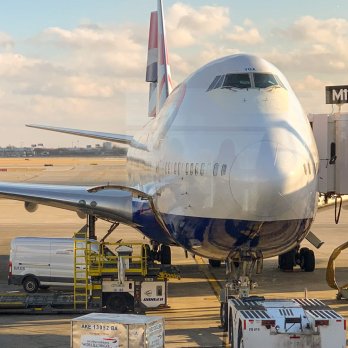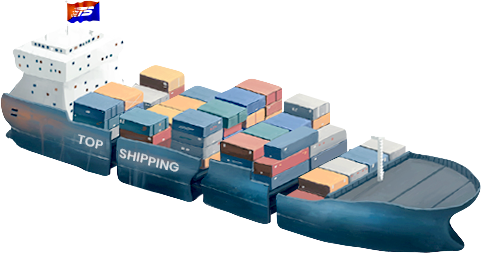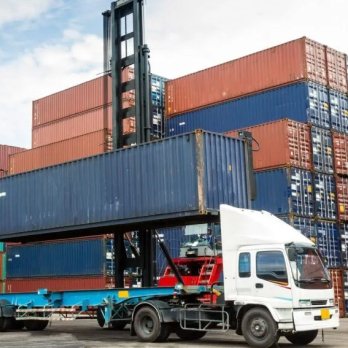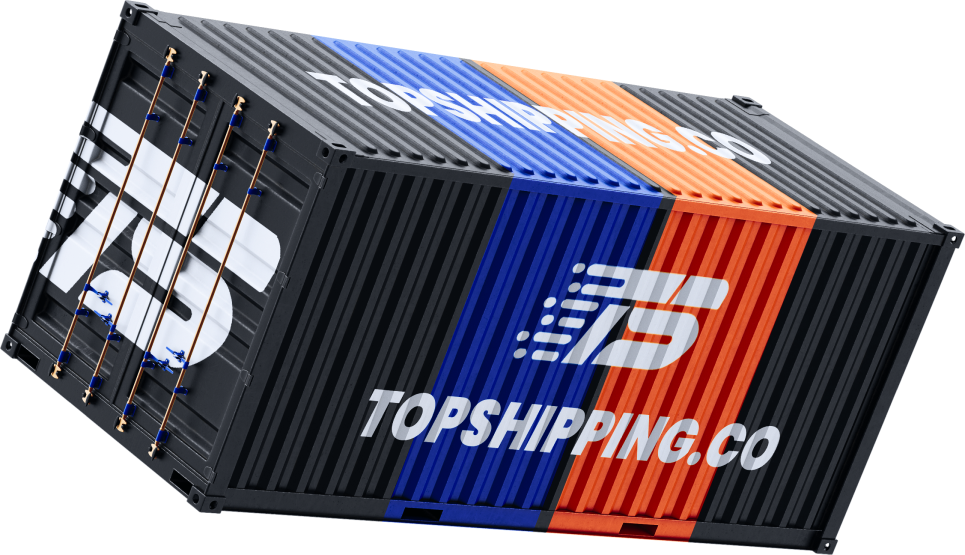

List Of The Most Important Papers And Documents Required For Import
Proforma Invoice
The proforma invoice forms the basis of documents in international trade. It gives a confirmed agreement by a supplier to sell a certain amount of goods or products and states therein, some key information to you, the importer, which forms grounds for starting to make important logistic and financial plans.
A proforma invoice, by nature, should give a similar level of detail as that of a commercial invoice, normally including:
- Buyer/ Seller Information: It clearly states the buyer and seller. More transparency and responsibility because of the information it carries.
- Description of Goods: It gives a clear description of goods or products traded. It explains the specifications and characteristics of the merchandise.
- HS Classification: It states the harmonized system classification of goods. This is where conformation to internationally accepted standards in trade takes place; customs clearances become easy.
- Price: This states the agreed price of the goods or products, allowing for proper financial planning and budgeting for those getting the quotes.
- Means of Payment: Stating the means of settlement agreed to by the parties involves stating the financial obligation and responsibility.
- Delivery Details: It gives an explanation on how it would be delivered, incorporating the shipment terms, mode of transport used, and the time of delivery.
- Currency: Stating the currency in which the quote is made helps avoid misunderstanding and keeps the same standard in financial dealings.
- Expiration Date: It provides a certain period of time within which the bid is valid to avoid any discrepancy due to market ups and downs.
Since the proforma invoice is involved in the initial process of importation, therefore it is a very vital document. It is a basic document on which all other logistical and financial arrangements would be based thus enabling the smooth and efficient execution of international trade deals.
Customs Packing List
A Customs Packing List is one of the most important documents in international trade, which details the shipment’s contents. It is indispensable in customs clearance and can be of great help at the time of the smooth processing of merchandise during transport. The following is a rundown of the essential elements that a Customs Packing List normally contains:
Exporter and Importer Information:
Clearly spells the names and addresses of the exporter, who is usually the seller, and the importer, usually the buyer, involved in the transaction.

Shipment Information
It provides detailed information on the shipment, such as the date of shipment, vessel, or flight number if it applies, and reference number.
Detailed Description of Contents
This provides an itemized breakdown of merchandise shipped. Included in it are.
Detailed description of items
Full description of goods, giving quantity, dimensions, weight, and distinctive features of the item.
Harmonized System (HS) Code
A distinctive HS code is provided for each item to assist classification and ascertainment of tariff at the time of customs clearance
Unit Value
Gives the unit value or price of each item that helps in calculation during the assessment of customs duties and taxes.
Total Value
Gives the total value of each item and the overall shipment value.
Packaging Details:
Package Type: Describes the type of package for all items shipped, such as cartons, pallets, and crates, plus details on the packaging utilized, including counts, dimensions, and gross weight.
Marks and Numbers
Details of any identification marks, labels, or serial numbers on the packages that may be used to identify particular packages composing the shipment could be provided, together with an explanation of why this is important for better tracking and handling purposes.
Detailed description of items
Full description of goods, giving quantity, dimensions, weight, and distinctive features of the item.
Harmonized System (HS) Code
A distinctive HS code is provided for each item to assist classification and ascertainment of tariff at the time of customs clearance
Country of Origin
Shows which country each item was made, manufactured, or produced in. This is a very important determinant when the issue of eligibility for a preferential trade agreement or duty exemption arises.
Declaration and Certification
Contains a statement by the exporter or shipper that the information provided about the items in the packing list is accurate and complete.
Additional Notes or Instructions:
This section provides any additional information or special instructions relevant to the shipment, which may include handling instructions, special precautions, and any other pertinent details.
A Customs Packing List is utilized to detail exactly the contents of a shipment so that customs officials can verify it against declared goods for confirming import regulations and requirements. As a result of this, the process of customs clearance will be quicker and might reduce delays or discrepancies in an international trade transaction.
Country Of Origin Certificate Or CO Certificate
A Country of Origin Certificate, often abbreviated as CO Certificate, is a document issued by the exporting country’s government or an authorized entity certifying the origin of goods.
This certificate is a crucial component of international trade, as it provides official confirmation of where the goods were manufactured, produced, or processed.
Key elements typically included in a Country of Origin Certificate are:
Exporter Information
Details of the exporter-name, address, and contact.
Importer Information
Details of the importer-name, address, and contact.
Description of Goods
Full description of the goods exported, including quantity, type, model, and any pertinent specifications.
Country of Origin
States clearly the country in which the goods were manufactured, produced, or processed.
This helps in determining eligibility for preferential trade agreements, tariffs, and customs duties.
Harmonized System Code
Provides a special HS code for each item, which makes the classification and tariff determination process easy at customs clearance.
Certification Statement
Certification statement from the issuing authority: The information provided in the certificate is correct and authentic.
Date of Issue
Specify the date the Country of Origin Certificate was issued.
Signature and Seal:
Sign and official seal or stamp of the issuing authority make the document credible and authentic.
The country of origin certificate plays a number of roles in international trade, such as:
Customs Clearance
It helps the customs authorities verify the origin of the goods and therefore the applicable tariffs, duties, or preferential trade treatment.
Trade Agreement
It helps meet trade agreements and regulations that involve importation.
Consumer Confidence:
It would give consumers more confidence about where their merchandise actually comes from and its quality.
While the Certificate of Country of Origin allows buyers and suppliers to facilitate transparency, compliance, and integrity in an international trade transaction by correctly recording the origin of the goods.
Commercial Invoice
One of the key documents used within international trade is the Commercial Invoice. It is a formal document of a commercial transaction occurring between a seller, usually an exporter, and a buyer, typically an importer.
It contains comprehensive details about the goods shipped and acts as a principal document for customs clearance, payment processing, and record-keeping purposes. What follows is what normally makes up a Commercial Invoice:
Exporter and Importer Information
The names, addresses, and contact information of both the exporter, commonly known as the seller, and the importer, commonly known as the buyer, are clearly indicated in the transaction.
Invoice Number and Date
Provides the document with a unique invoice number for identification and the date the invoice was issued.
Description of Goods:
It gives a full description of goods shipped, including quantity, type, model, specification, and any other relevant information that may be employed in its identification.
Unit Price and Total Value:
Per-unit price of each item, specifying the total value of merchandise being invoiced, helps in the correct financial transaction processing and customs valuation.
Currency
Declares the currency in which goods are priced and will be paid for, thus ensuring clarity and consistency in financial transactions.
Payment Terms
States the terms of payment agreed between the two parties-buyer and seller-which include modes of payment, when payments are due, and any discount or penalty allowed or imposed.
Shipping Terms
Agreed terms of delivery, which include how the shipment will be effected, the terms of delivery, and shipping documents related to the transaction, such as EXW, FOB, and CIF, along with the bill of lading or air waybill.
Country of Origin
Mention the country of manufacture, production, or processing of the merchandise. The country of origin is important for customs clearance and compliance with trade regulations.
HS Code (Harmonized System)
Provide an HS code for each product, which helps during customs clearance in classifying and finding out the tariff.
Declaration Statement
It contains the exporter’s declaration, which certifies that all the information provided in the invoice is correct and true.
Signature and Seal:
Bearing the signature of the exporter or representative, complete with any official seals or stamps, lends credibility to the authenticity of the document.
The Commercial Invoice is critical in international trade transactions: it gives a detailed record of the commercial agreement between the buyer and seller, thus guaranteeing that customs clearance and payment procedures are processed smoothly.
It is a legal document that limits disputes and discrepancies between trading partners.
Bill Of Lading
Bill of Lading is a very crucial document in the line of international trade. It serves as a receipt for the goods shipped and as a contract between the shipper and the carrier, which is the shipping company that will transport it.
It shows that goods have been received for shipment and that carriage will be performed in accordance with certain terms and conditions.
The following components are usually contained in a Bill of Lading:
Shipper and Consignee Information:
The name, address, and contact information of the shipper, normally the exporter sending goods, are clearly stated herein, along with those of the consignee-receiver who will receive the goods.
Carrier Information:
Is the name, address, and contact details of the carrier, which is actually the shipping company in charge of the good’s transportation.
Vessel and Voyage Details:
Vessel name, voyage number, which denotes the date of sailing and expected arrival date at the destination port to provide all necessary tracking and scheduling information.
Description of Goods
Will describe the goods in full being transported by quantity, commodity type, weight, dimensions, packaging, and any special handling instructions.
Shipping Terms
Agreed terms of delivery, including the agreed Incoterm-for example FOB and CIF-indicate the point at which risk and responsibility for goods are passed from the seller to the buyer.
Freight Charges:
Consignment expenses that the shipper or consignee has to pay for while the goods are transported, with any additional surcharges or fees.
Consignee Instructions:
It contains instructions for the carrier about delivering goods to the consignee: the destination port or address, with any specific delivery conditions attached, if any.
Signature and Seal:
The document bears the signature of the shipper or the representative authorized to sign, putting an official seal or stamp to testify that everything reflected in this document is true and accurate.
Terms and Conditions:
It identifies the terms and conditions for carriage, limitation of liability, insurance coverage, and dispute resolution mechanisms on goods in transit.
The Bill of Lading serves a variety of critical purposes in international trade, including:
- Receipt of Goods: It serves as an acknowledgment that the goods have been received by the carrier for shipment and gives documented evidence of the transfer of possession from the shipper to the carrier.
- Carriage Contract: It is a legally binding agreement between the shipper and carrier on the terms and conditions of carriage and the responsibilities expected from each of the parties.
- Title Document: It is a negotiable instrument and can be used for transferring ownership of the goods in transit and allows trade finance transactions such as letter of credit and bill of exchange.
- Documentary Requirement: It is, therefore, a needed document for customs clearance and import/export formalities since it contains sufficient information about the actual shipment and transportation of merchandise.
In general, the Bill of Lading provides a smooth and effective flow in the transportation of goods in international trade because it allows transparency, accountability, and legal protection to the parties in the shipment.
Air Waybill
The Air Waybill, or AWB, is one of the most vital documents in air cargo transportation. It provides evidence of a contract of carriage between the shipper, or consignor, and the carrier, or airline, showing terms for transport and stating all relevant information regarding the goods to be moved. The following items will show what is commonly contained on an Air Waybill:
Shipper and Consignee Information:
Clearly states the names, addresses, and contact information of the consignor (shipper) sending the goods and the consignee who is to receive the goods.
Carrier Information:
Contains the name, address, and contact information of the carrier, which is the airline in charge of delivering the shipment.
Flight Details:
Includes the flight number, airport of departure, and airport of arrival and their calculated dates and times of arrival and departure, respectively. This constitutes very important information for tracking and scheduling.
Description of Goods:
Gives a full description of the goods shipped: quantity, type, weight, dimensions, packaging, and any specific handling instructions.
Shipping Terms:
State the terms of shipment agreed to in the contract; state the agreed-upon Incoterm-for example, CIF or FCA-which indicates where the risk and responsibility for the goods pass from seller to buyer.
Freight Charges:
State any freight charges payable by either the shipper or consignee for the transport of the goods, with any additional surcharges or fees.
Declared Value for Carriage:
State the value of the goods declared in respect of carriage, which might be used for ascertaining liability in case of loss or damage while in transit.
Special Instructions:
Provides special handling instructions or needs, which can include things such as temperature control, security measures, or hazardous materials handling.
Signature and Seal:
Bears the signature of the shipper or duly authorized representative, together with any official seals or stamps, as certification that the document is accurate and correct.
The Air Waybill performs the following major functions in air freight forwarding:
- Receipt of Goods: Recognizes the carrier’s receipt of goods for transportation by air and provides evidence of the transfer of possession from the shipper to the carrier.
- Bill of Lading: It is the legally binding contract between the shipper and carrier, stipulating terms and conditions to be fulfilled by both parties in executing transportation.
- Title Document: It is a non-negotiable document that verifies the details in shipment and presents information that is usually required in customs clearance and import or export procedures.
- Documentary Requirement: It is a documentary requirement for customs clearances and import/export for the purpose of informing the end customer with relevant details of goods shipped and their transport.
The Air Waybill greatly facilitates the whole operation of transporting goods through air with ease and efficiency, and thus brings transparency and accountability into the operations with legal protection to the parties concerned in the shipment.
Insurance Certificate
An Insurance Certificate, also known as a Certificate of Insurance, is an official document provided by an insurance company or broker.
It is supposed to confirm that there is, in fact, an insurance policy in place and to provide full information on the extent of the coverage it carries.
In international trade, an Insurance Certificate plays a very important role since it presents real proof of insurance cover for goods in transit.
This covers everything from a spectrum of risks arising during transportation.
Here are the key components typically included in an Insurance Certificate:
Information of the Insured Party:
Clearly, the name, address, and contact details which could come from the exporting party, importing party, or any other party who may have an insurable interest in the goods in transit.
Insurance Company Details:
It reflects the name and address with relevant contact information for the insurance company/underwriter issuing the policy, with a statement of all the relevant policy numbers or references.
Policy Details:
It contains the description of the insurance policy, type of coverage-for instance, marine cargo insurance or freight insurance, policy period-effective dates, and special terms, conditions, or exclusions applicable to the cover.
Insured Goods:
This sub-section provides the description of the insured goods, showing quantity, type, value, and all other information that might be relevant and necessary for the insurance covers.
Coverage Limits:
Specifies the monetary limits of coverage accorded by the insurance policy, including the maximum amount payable in case of loss or damage to the insured goods and any deductible or excess amounts applicable to the policy.
Risks Covered:
A list of the specific risks or perils against which the subject-matter of insurance is covered-for example, theft, damage, breakage, fire, natural disasters, or other specified events.
Additional Coverage:
Shows if there is any additional cover or endorsements to the insurance policy; examples are inland transit, storage, or any other additional services.
Certificate Holder:
This is the recipient of the Insurance Certificate, usually the party requiring evidence of insurance cover, such as the buyer, shipping company, or customs authority.
Signature and Seal:
The signature of an authorized representative of the insurance company or broker, often affixed with official seals and stamps, binds the validity of the Insurance Certificate.
This is a very important document in international trade, wherein during shipment, all parties are covered against any potential risks and liabilities that may befall the goods while in transit.
It is also demanded by the customs authorities, shipping companies, and other stakeholders as a minimum requirement for the efficient release of goods and smooth processing of trade.
Quality Certification
A Quality Certification is a certificate provided by a recognized authority/certification body. It primarily attests that the product, service, procedure, or system complies with the quality standard or specifications stipulated. Usually, companies get certifications to prove their dedication toward high standards of quality and hence guarantee that all the requirements imposed by any industrial norm, regulation, or customer will be fulfilled. There exist several types of quality certifications, some of which are:
Here are some common types of quality certifications:
ISO Certifications:
ISO certifications are among the most well-known and recognized quality certifications in the world. The standard ISO encompasses a range of standards dealing with different aspects of quality management, which includes but is not limited to: ISO 9001 on quality management systems; ISO 14001 on environmental management systems; ISO 45001, which is a new standard on occupational health and safety management systems; and many more.
Product Certification:
Product certification attests that a particular product meets the quality, safety, or performance standards laid down by regulatory agencies, an industry association, or an independent certification body. Examples include CE marking in the European Union, UL Certification in the United States, and CCC certification in China.
Industry-Specific Certification:
Most of the industries have their own set of standards and certifications that address requirements and challenges typical to them.
Examples include AS9100 for aerospace, IATF 16949 for automotive, GMP for pharmaceuticals, and HACCP for food safety.
Quality Management System Certifications:
These certifications ensure that a company has implemented and maintains an organized quality management system to ensure consistency, compliance, and continuous improvement in processes.
The most common QMS certification is ISO 9001; however, other QMS certifications also exist that are specific to particular industries.
Environmental and Sustainability Certification:
With an increased emphasis on environmental responsibility and sustainability, certifications related to ISO 14001 for environmental management, LEED for Leadership in Energy and Environmental Design, and B Corp certification for socially and environmentally responsible businesses have become more prominent.
Safety Certifications:
Safety certifications imply that a product or process adheres to specified safety standards or regulations in order to minimize risks to workers, consumers, and the environment. Examples include OSHA certifications, NEBOSH certifications, and several product safety certifications.
Supplier Quality Certifications:
Many companies require suppliers to obtain specific quality certifications in order to make certain that products or services provided are of quality and reliable. Supplier certifications can be to the standards for an industry or to the quality requirements of the buyer.
Quality certification serves today as a competitive differentiator in the global market to facilitate trust and competitiveness and satisfy customers. They are concrete proof that an organization is really committed to quality, compliance, and continuous improvement; hence, they add to the success of business and stakeholder confidence.
Bank Letter of Credit
LC is issued by the bank at the request of the buyer (importer) for the purpose of payment assurance to a seller (exporter) against presentation of specified conditions as mentioned in the LC.
It provides a valid means of payment in an international trade transaction that involves various risks for all the parties concerned.
Here’s how a Letter of Credit typically works:
Parties Involved:
Importer/Buyer
The party at whose instance the LC is originated, usually the buyer of certain goods or services from an overseas supplier.
Exporter/Seller
The party who receives payment under the LC, usually the seller or supplier of goods or services to the importer.
Issuing Bank
The bank that issues the LC upon the request of the importer and undertakes the responsibility of honoring or negotiating the documents when such documents comply with the terms of the letter of credit.
Advising Bank
Bank in the exporter’s country that receives and advises the LC to the exporter, confirming its validity and related terms.
Terms and Conditions:
Amount Payable:
Also represents the amount payable under the letter of credit, which usually is thought of as the value of goods or services purchased.
Expiry Date:
The Expiration date fixes the validity period within which the exporter needs to present conforming documents to the bank for claiming payment.
Shipping Documents:
This informs the required documents that the exporter must present to the bank for proving the shipment of goods, which includes a commercial invoice, packing list, bill of lading, and insurance certificate.
Inspection or Quality Certificates
There can be certain documents that may be required for ascertaining the quality or conformance of the shipped goods.
Incoterms
It should contain the agreed Incoterms, which is used to define the responsibilities of the buyer and seller as far as transportation, insurance, and risk transfer are concerned.
Procedure
Amount Payable:
Also represents the amount payable under the letter of credit, which usually is thought of as the value of goods or services purchased.
LC Issuance:
The importer requests the issuing bank to issue an LC in favour of the exporter, providing the necessary information and conditions of the transaction.
LC Advising:
The issuing bank advises the LC to an advising bank in the exporter’s country, which in turn contacts the exporter with the advice of the opening of the LC and its terms.
Shipment of Goods:
The exporter ships the goods to the importer and prepares the shipping documents according to the conditions of the LC.
Document Presentation:
Then the exporter will send the relevant documents to the advising bank to check whether the documents comply with the terms of the LC.
Payment:
Once the documents have been conformed to, the advising bank sends them to the issuing bank, which then effects payment to the exporter terms of the LC.
A Letter of Credit protects both the buyer and seller against possible fraud in an international transaction.
It gives the importer the security that, under the LC, payment will be made against its requirements, and provides the exporter with the assurance that if the stated conditions are met, the payment will be paid.
This setup creates trust and allows for the smooth execution of transactions among participants involved in international trade.
Import License
An Import License refers to a government authority’s formal permit that enables individuals or organizations to import particular goods into the country. It also plays a significant role in regulatory compliance, trade activity monitoring, and domestic industry protection.
Import License: Overview
Purpose
- Regulatory Compliance: Import licenses ensure that the products comply with regulatory standards on safety, health, environmental impact, and quality.
- Monitoring of Trade: Import license basically helps governmental authorities to have track records of the inflow of commodities entering the country and to regulate it by volume, type, and origin.
- Protection of Domestic Industries: Import licenses may include quota, tariff, or any restriction aimed at saving domestic industries from unfair competition.
Types of Import Licenses:
- General Import License: Grants a license to importers for importing a wide category of goods without any particular limitation.
- Specific Import License: Permissions given for importing specific types of goods, yet quantity or quality can be restricted in various forms.
- End-Use or End-User License: Controls goods with distinctive uses or recipients, such as military equipment or controlled substances.
- Quota License: Specifies the quantity of goods to be imported over a certain period, governing supply and demand conditions or protecting domestic industries.
- Restricted or Prohibited Goods License: Permits the importing of goods that are legally, health-wise, safely, or environmentally restricted or prohibited.
Application Process:
- Application Process: Applications for import licenses are usually made through relevant government authorities charged with overseeing international trade or customs.
These tend to require a variety of documentation such as business registration, tax identification number, product certification, and proof of conformance. - Mechanisms of issuance also vary: sometimes it is automatic, sometimes on review, and in other cases issued upon approval of various agencies.
Compliance and Renewal:
Importers shall conform to the terms with regard to license, concerning quantity, standard of quality and reporting requirements.
Licenses often expire and, thus periodically needs to be renewed depending on the requirements of the issuing authorities
Failure to comply may result in penalties, fines, seizure of goods or even legal action Import license govern and legalize the international trade and quality standards. Importers are suggested to have an eye on import license requirements for the country from where their business is licensed to avoid compliance violations and discontinuation of business.
Inspection Certificate
Certificate of Inspection: A Certificate of Inspection is a critical document issued by an accredited inspection agency or body, which certifies that goods, products, or commodities meet certain tight quality, safety, or regulatory standards.
This certificate testifies to the fact that the items under inspection have attained a set of specifications or requirements and becomes important in many lines of operation: international trade, manufacturing, agriculture, and consumer goods.
Overview of Inspection Certificates Briefly stated, the purpose is as follows: Quality Assurance: Inspection certificates ensure that goods or products maintain a certain standard of quality in respect of consistency and reliability, and also meet regulatory requirements. Safety Compliance: Certificates may well confirm that the products meet safety standards and regulations. This helps to reduce risks to consumers, workers, and the environment. Regulatory Compliance: Certificates may be required as proof that the business operations meet the requirements of specific industry regulations, import/export regulations, or international standards.
The Inspection Certificate also provides documentary evidence of product quality and compliance, thus allowing international trade transactions and customs clearances.
Types of Inspection Certificate:
- Product Inspection Certificate: It ensures that a particular consignment or lot of any merchandise meets the required quality, safety, or performance standards.
- Quality Control Certificate: It ensures that goods or products have passed quality control and meet specific standards of quality, as predefined.
- Safety Inspection Certificate: Indicates that the products meet safety regulations and standards to ensure there is no threat to the consumers or users.
- Phytosanitary Certificate: The agricultural or plant material product is free from any pests or disease vectors and meets the phytosanitary requirements.
- Pre-shipment Inspection Certificate: The inspections carried out at the site of production or prior to shipment are appropriately completed, meeting the contractual requirements, standards of quality, specifications.
- Government Inspection Certificate: These are issued to attest goods or products for meeting regulatory requirements, import/export regulations, or industry standards by government agencies or accredited inspectors.
Details contained in the Inspection Certificates:
- Description of Items Inspected: Products or goods inspected, described with regard to quantity, specifications, and all applicable identifiers.
- Inspection Results: Statement confirming the inspected items meet specified quality, safety, or regulatory standards.
- Inspection Methodology: Description of the inspection process, methods used, sampling procedures, and criteria for evaluation.
- Date and Place of Inspection : It shows when and where the inspection has been done, allowing traceability and responsibility.
- Inspector’s Name and Signature : Signature and stamps by an authorized inspector or agency issuing the certificate; to this date, verification should be given that the authenticity of this certificate is checked.
Use and Importance:
In their way, inspection certificates form a very critical part of international trade through the assurance of quality and compliance of the product, thereby facilitating trading transactions for consumer protection while reducing risks.
Importers may require inspection certificates as part of due diligence in sourcing goods from suppliers or for customs clearance purposes.
Inspection certificates also lend strength to transparency, trust, and confidence between trading partners and are helpful in building up and maintaining good business relationships.
Overall, the Inspection Certificate is an important document that acts as evidence of the quality and safety features and regulatory compliance issues of the products concerned. These documents are basically quality assurance tools that might be regarded as critical tools in the assurance of quality and regulatory compliance, among other risks involved in the various industries and trade environments.
Final Takeaway
This thus calls for caution on a myriad of documents and certifications that attend every transaction in international trade, each playing a different role that helps assure smoothness of transaction, regulatory compliance, and quality assurance.
Each document- from Proforma Invoices to Inspection Certificates- provides critical services in the facilitation of trade, protection of stakeholders, and maintenance of standards.
Proforma Invoices provide the preliminaries on any transaction, including basic information about the buyers and sellers, a description of goods, and even terms of payment. Then comes the Commercial Invoices to solidify agreements and provide a formal record of customs and financial purposes.
Logistical documents such as the Bill of Lading and Air Waybill ensure the safe and efficient movement of goods. An Insurance Certificate provides surety against fortuitous risks in transit. Import licenses and quality certifications ensure that goods conform to the regulatory standards and retain the integrity of products and services accordingly.
Further, compliance with the international standards on wood packaging materials like ISPM 15 shows a commitment to quality, safety, and sustainability in global trade. Within this web of documentation, each document has its role to play in enhancing reliability and transparency with efficiency in cross-border trade transactions.
Understanding and then satisfying each requirement of the documents will have a business working its confident way through the maze of international commerce, remaining compliant, ensuring all types of risks are minimized, and fostering strategic partnerships in the global marketplace.

TopShipping
With years of experience in logistics and freight forwarding, the author is passionate about making shipping smoother and more efficient.
As a leader at TopShipping, they’ve developed a deep understanding of supply chain management, international shipping rules, and creative logistics solutions. They’re driven by a desire to help businesses succeed by delivering reliable, customer-focused services.
Over the years, they’ve also shared their expertise by writing for various industry publications, offering practical tips and insights on the latest trends in logistics. Thanks to their leadership, TopShipping has become a trusted name for companies looking for hassle-free global freight solutions.
Comment Section
Comment
Write your idea about "What documents are needed to Import from China"
















No comments yet.